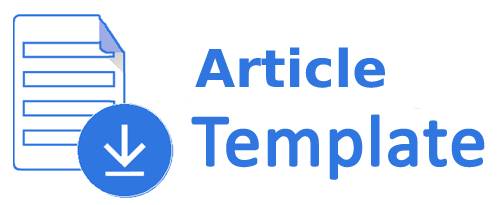Ontology for the Domain of Food Science
DOI:
https://doi.org/10.17821/srels/2016/v53i5/89230Keywords:
Knowledge Representation, Food Science, Ontology, Semantic Web, Information Retrieval.Abstract
Information in the domain of food science is vast and techniques for managing and organizing such knowledge become essential. Present day information retrieval systems are based on full text searching for keywords which often retrieves irrelevant information and does not fulfill the user's requirements. A solution to the above chaos is ontology. The current paper describes an ontology for food science domain using Protege.Downloads
Downloads
Published
How to Cite
Issue
Section
License
All the articles published in Journal of Information and Knowledge are held by the Publisher. Sarada Ranganathan Endowment for Library Science (SRELS), as a publisher requires its authors to transfer the copyright prior to publication. This will permit SRELS to reproduce, publish, distribute and archive the article in print and electronic form and also to defend against any improper use of the article.
Accepted 2016-10-14
Published 2016-12-12
References
Gruber, T.R. (1993). A Translation Approach to Portable Ontologies. Knowledge Acquisition. 5(4): 199-220. DOI: https://doi.org/10.1006/knac.1993.1008
Noy, N.F. and McGuiness, D.L. Ontology Development 101: A Guide to Creating Your First Ontology. Accessed on June 5, 2014 at http://www.ksl.stanford.edu/people/dlm/papers/ ontology-tutorial-noy-mcguinness.pdf
Villarias, L.G. (2004). Ontology-Based Semantic Querying of the Web with respect to Food Recipes. Technical University of Denmark. Master Thesis. 1-118.
Graca, J.; Mourao, M.; Anunciacao, O.; Monteiro, P.; Pinto, H.S. and Loureiro, V. (2005). Ontology Building Process: The Wine Domain. In: Proceedings of the 5th Conference of the European Federation for Information Technology in Agriculture, Food and Environment. Accessed on June 5, 2014 at http://www.inesc-id.pt/pt/indicadores/Ficheiros/3615.pdf
Batista, F.; Paulo, J.; Mamede, N.; Vaz, V. and Ribeiro, V. (2006). Ontology Construction: Cooking Domain. Artificial Intelligence Methodology Systems and Applications. 4183:213-21.
Lopez, M.F.; Gomez-Perez, A. and Sierra, A.P. (1999). Building a Chemical Ontology Using Methontology and the Ontology Design Environment. IEEE Intelligent Systems. 4(1):37-46. DOI: https://doi.org/10.1109/5254.747904
Makino, R.; Kobayashi, I.; Izumi, N. and Hasida, K. (2009). An Ontology Approach to Creating a New Recipe by Reusing Parts of the Existing Recipes. In: IEEE International Conference on Intelligent Computing and Intelligent Systems, 20-22 November, 2009, Shanghai, p. 496-500. DOI: https://doi.org/10.1109/ICICISYS.2009.5358123
Horridge, M. (2007). Pizza Ontology 1.5. Accessed on August 5, 2014 at http://130.88.198.11/tutorials/protegeowltutorial/ resources/ProtegeOWLTutorialP4_v1_3.pdf
Snae, C. and Brückner, M. (2008). Foods: A Food-Oriented Ontology-Driven System. In Second IEEE International Conference on Digital Ecosystems and Technologies, 26-29 February 2008, Phitsanulok, p. 168-176. DOI: https://doi.org/10.1109/DEST.2008.4635195
Lee, B.M. (2012). Food Ontology Model for a Healthcare Service. Journal of the Korea Industrial Information System Society. 17(6): 31-40. DOI: https://doi.org/10.9723/jksiis.2012.17.6.031
Dutta, B.; Chatterjee, U. and Madalli, D.P. (2015). Yamo: Yet another Methodology for Large-Scale Faceted Ontology Construction. Journal of Knowledge Management. 19(1): 6-24. DOI: https://doi.org/10.1108/JKM-10-2014-0439
Lopez, M.F.; Gomez-Perez, A. and Juristo, N. (1997). Methontology: From Ontological Art Towards Ontological Engineering. In AAAI Symposium on Ontological Engineering, 24-26 March, 1997, Stanford, p. 33-40.
Gruninger, M. and Fox, M.S. (1995). Methodology for the Design and Evaluation of Ontologies. In: IJCAI Workshop On Benchmarking Theory and Practice, 13 April 1995, Montreal, p. 1-10.
Neelameghan, A. and Sangameswaran, S.V. (1970). Food Technology: Depth Classification Version of CC. Bangalore: Sarada Ranganathan Endowment for Library Science.
Holger, K.; Olivier, K.; Mark, D. and Musen, A. (2004). Weaving the Biomedical Semantic Web with the Protégé Owl Plugin. In: International Workshop on Formal Biomedical Knowledge Representation, 2004, Stanford. p. 1-9.
Uschold, M. and Gruninger, M. (1996). Ontologies: Principles Methods and Applications. The Knowledge Engineering Review. 11(2):93-155. DOI: https://doi.org/10.1017/S0269888900007797
Protégé Owl Ontology Editor, Protégé 4.3. Accessed on Mar 10, 2014 at http://protege.stanford. edu/
Fact++ Reasoner. Accessed on Mar 10, 2014 at http://owl.cs.manchester.ac.uk/tools/fact/

 T. Padmavathi
T. Padmavathi








